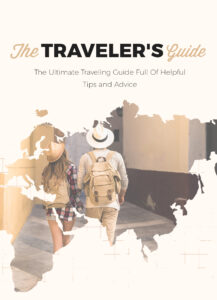Patagonia Trekking: Glaciers and Southern Chilean Landscapes

Before diving in, please note: This post is for informational purposes only. If you’d like to know more about how we approach topics, feel free to check out our friendly Disclaimer Page.
Hey there, amazing readers! 🖐️ Just a quick note: yes, we know there are a lot of ads here. Trust us, we get it—it’s not the prettiest look, but they help us keep this blog alive and kicking. Those pesky little ads cover the costs of all the behind-the-scenes magic, from hosting and tech stuff to creating content we hope you’ll love.
We’re committed to delivering quality posts, and your support (even just sticking around despite the ads) means everything to us. So, bear with us, and thanks for helping us keep the good vibes rolling. Now, on to the fun stuff! 😉
TRANSLATE BUTTON AT THE END OF THE ARTICLE
Introduction to Patagonia Trekking
Patagonia, a vast and rugged region located at the southern tip of South America, is a trekker’s paradise.
Known for its striking landscapes, including towering mountains, crystal-clear lakes, and ancient forests, Patagonia offers some of the most awe-inspiring trekking experiences in the world.
One of the highlights of trekking in Patagonia is the opportunity to explore its stunning glaciers, which are among the largest outside of Antarctica.
Additionally, the region is home to a diverse array of wildlife, including guanacos, foxes, and elusive pumas.
Whether you are an experienced trekker looking for a new challenge or a nature lover seeking to immerse yourself in the beauty of the natural world, Patagonia has something to offer everyone.
Exploring the Glaciers of Patagonia
The glaciers of Patagonia are truly a sight to behold.
These massive ice formations, remnants of the last Ice Age, are constantly shifting and changing, creating a dynamic and ever-evolving landscape.
One of the most famous glaciers in Patagonia is the Perito Moreno Glacier, located in Los Glaciares National Park in Argentina.
This colossal glacier is over 19 miles long and rises to a height of 240 feet above the surface of the water.
Visitors to Perito Moreno can witness the spectacle of massive ice chunks calving off the glacier and crashing into the lake below with a thunderous roar.
Another popular glacier in Patagonia is the Grey Glacier, located in Torres del Paine National Park in Chile.
This glacier stretches over 16 miles long and is a popular destination for trekking and ice climbing.
The Stunning Landscapes of Southern Chile
Southern Chile is home to some of the most breathtaking landscapes in Patagonia.
From the jagged peaks of the Andes Mountains to the pristine waters of the fjords, this region is a feast for the eyes.
One of the must-see attractions in southern Chile is Torres del Paine National Park, a UNESCO World Biosphere Reserve known for its towering granite peaks, azure lakes, and ancient forests.
The park offers a variety of trekking trails for all skill levels, allowing visitors to explore its diverse ecosystems and encounter its abundant wildlife.
Other highlights of southern Chile include the Carretera Austral, a scenic highway that winds through remote wilderness areas, and the Chiloé Archipelago, a collection of islands known for their unique culture and traditional wooden churches.
Best Time to Visit Patagonia for Trekking
The best time to visit Patagonia for trekking is during the region’s summer months, which run from December to March.
During this time, the weather is milder, with longer daylight hours and lower chances of precipitation.
However, it’s important to note that the weather in Patagonia can be unpredictable, and trekkers should be prepared for sudden changes in conditions.
If you prefer to avoid the crowds, consider visiting in the shoulder seasons of spring (September to November) or fall (April to June), when the weather is still pleasant, and the landscapes are ablaze with autumn colors.
Winter trekking is also possible in Patagonia, but it is reserved for the most experienced trekkers due to harsh weather conditions and limited services.
Essential Gear for Patagonia Trekking
When embarking on a trekking adventure in Patagonia, it’s essential to have the right gear to ensure your safety and comfort.
Some must-have items include:
Sturdy hiking boots with good ankle support
Layered clothing to prepare for changing weather conditions
Waterproof and windproof outerwear
A warm hat and gloves
Sunglasses and sunscreen to protect against the strong UV rays
A reliable backpack to carry essentials such as water, snacks, and a first aid kit
Trekking poles for stability on uneven terrain
Discover "The Traveler’s Guide: Your Ultimate Companion for Every Adventure ✈️"

A durable tent and sleeping bag for camping
Having the right gear can make all the difference in your trekking experience in Patagonia and help you fully enjoy the stunning landscapes and challenging trails.
Top Trails for Trekking in Patagonia
Patagonia offers a wide variety of trekking trails for all levels of experience, from leisurely day hikes to challenging multi-day treks.
Some of the top trails for trekking in Patagonia include:
The W Circuit in Torres del Paine National Park, a 50-mile trek that takes you through some of the park’s most iconic landscapes
The Dientes Circuit on Navarino Island, a remote and challenging trek that offers stunning views of the Beagle Channel
The Huemul Circuit in Los Glaciares National Park, a challenging trek that takes you off the beaten path to explore remote glaciers and high mountain passes
The Villarrica Traverse in Villarrica National Park, a trek that takes you through lush forests, volcanic landscapes, and hot springs
No matter which trail you choose, you are sure to be amazed by the natural beauty and wilderness of Patagonia.
Tips for a Safe and Enjoyable Trekking Experience
To ensure a safe and enjoyable trekking experience in Patagonia, consider the following tips:
Always check the weather forecast before setting out on a trek and be prepared for changing conditions.
Stay on designated trails to protect fragile ecosystems and minimize your impact on the environment.
Carry enough water and snacks to stay hydrated and energized throughout your trek.
Let someone know your itinerary and expected return time in case of emergencies.
Respect wildlife and maintain a safe distance to observe animals without causing them distress.
Pack out all trash and leave no trace of your visit to help preserve the pristine landscapes of Patagonia.
Be mindful of altitude sickness at higher elevations and acclimate gradually to avoid health risks.
Practice Leave No Trace principles by minimizing your impact on the environment and leaving natural spaces as you found them.
By following these tips, you can have a safe and unforgettable trekking experience in Patagonia.
Wildlife Encounters in Patagonia
Patagonia is home to a diverse array of wildlife, including iconic species such as guanacos, Andean condors, pumas, and Magellanic penguins.
While trekking in the region, you may have the opportunity to encounter these animals in their natural habitats.
Keep an eye out for guanacos grazing on grasslands, condors soaring high above the mountains, and pumas prowling through dense forests.
If you’re lucky, you may even spot a pod of orcas hunting along the coast or a family of foxes playing in the underbrush.
Wildlife encounters in Patagonia are a highlight of any trekking adventure and offer a unique opportunity to connect with nature in a profound way.
Camping Options in Patagonia
Camping is a popular accommodation option for trekkers in Patagonia, as it allows you to immerse yourself in the natural beauty of the region and experience its wilderness up close.
Many national parks and trekking trails in Patagonia offer designated campsites with basic amenities such as toilets, picnic tables, and fire pits.
Additionally, backcountry camping is permitted in some areas, allowing you to pitch your tent in remote and pristine locations.
If you prefer a more comfortable camping experience, consider staying at one of the eco-friendly lodges or refugios scattered throughout Patagonia, which offer hot showers, meals, and comfortable beds after a long day of trekking.
Guided vs. Solo Trekking in Patagonia
When planning a trekking adventure in Patagonia, you will need to decide whether to go on a guided tour or trek solo.
Both options have their advantages and considerations:
Guided trekking tours offer the expertise of local guides, logistical support, and the opportunity to meet fellow trekkers.
Solo trekking allows for more flexibility, independence, and the chance to immerse yourself in nature without distractions.
Guided tours are recommended for beginners or those unfamiliar with the region, while experienced trekkers may prefer the challenge of solo trekking.
Whether you choose a guided tour or solo trekking, be sure to plan ahead, research your route, and prepare adequately for your adventure in Patagonia.
Sustainable Practices in Patagonia Trekking
Sustainable practices are essential when trekking in Patagonia to preserve its pristine landscapes and protect its fragile ecosystems.
Consider the following sustainable practices during your trekking adventure:
Minimize your waste by packing out all trash and leaving no trace of your visit.
Stay on designated trails to avoid damaging vegetation and disturbing wildlife.
Respect wildlife by observing from a safe distance and avoiding interactions that could harm animals.
Support local communities by purchasing supplies and services from small businesses and eco-friendly operators.
Conserve water and energy by using resources efficiently and reducing your impact on the environment.
Educate yourself about the flora, fauna, and cultural heritage of Patagonia to deepen your appreciation for the region.
By practicing sustainability during your trekking adventures in Patagonia, you can help protect the natural beauty of the region for future generations to enjoy.
Conclusion: Embracing the Beauty of Patagonia
In conclusion, Patagonia offers a wealth of trekking opportunities for adventure seekers, nature lovers, and wildlife enthusiasts alike.
From exploring the glaciers of Los Glaciares National Park to trekking through the stunning landscapes of Torres del Paine, Patagonia is a destination like no other.
By following essential gear recommendations, choosing the right trekking trails, and practicing sustainable principles, you can have a safe and enjoyable trekking experience in this wild and remote region.
So pack your bags, lace up your hiking boots, and get ready to immerse yourself in the beauty of Patagonia’s glaciers and southern Chilean landscapes.
A trekking adventure in Patagonia is sure to leave you with memories that will last a lifetime.

The Enlightenment Journey is a remarkable collection of writings authored by a distinguished group of experts in the fields of spirituality, new age, and esoteric knowledge.
This anthology features a diverse assembly of well-experienced authors who bring their profound insights and credible perspectives to the forefront.
Each contributor possesses a wealth of knowledge and wisdom, making them authorities in their respective domains.
Together, they offer readers a transformative journey into the realms of spiritual growth, self-discovery, and esoteric enlightenment.
The Enlightenment Journey is a testament to the collective expertise of these luminaries, providing readers with a rich tapestry of ideas and information to illuminate their spiritual path.
Our Diverse Expertise 🌟
While our primary focus is on spirituality and esotericism, we are equally passionate about exploring a wide range of other topics and niches 🌍📚. Our experienced team is dedicated to delivering high-quality, informative content across various subjects ✨.
To ensure we provide the most accurate and valuable insights, we collaborate with trusted experts in their respective domains 🧑🏫👩🏫. This allows us to offer well-rounded perspectives and knowledge to our readers.
Our blog originally focused on spirituality and metaphysics, but we’ve since expanded to cover a wide range of niches. Don’t worry—we continue to publish a lot of articles on spirituality! Frequently visit our blog to explore our diverse content and stay tuned for more insightful reads.





